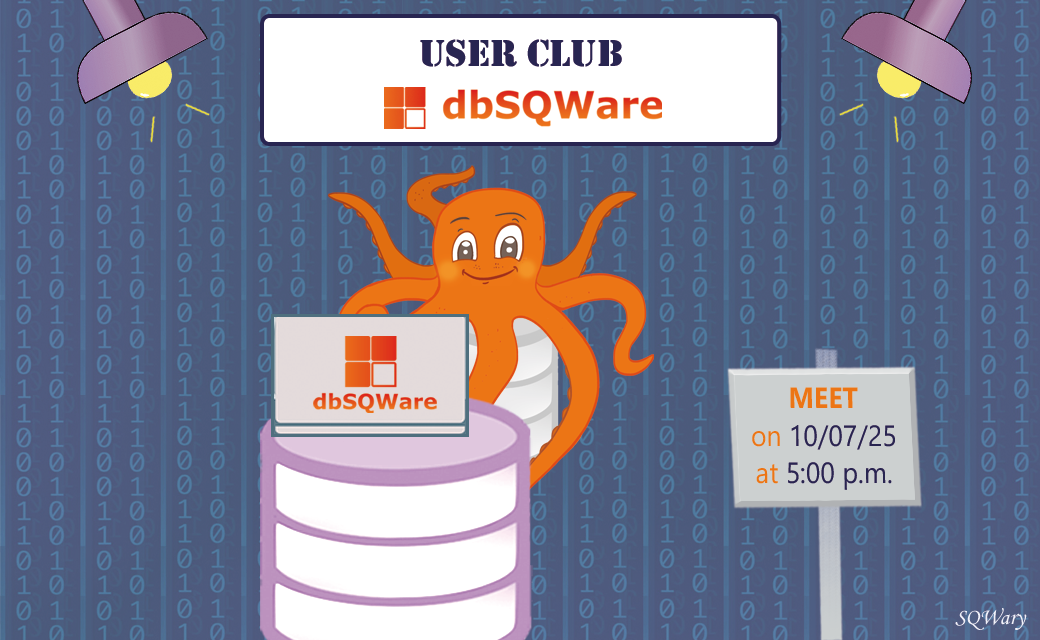
This evening, at 5 p.m., we invite you to a new session of our USER CLUB! Raphael Mathurin and Thomas Payan will be happy to lead this talk and present a new dbSQWare module, eagerly awaited by all!Its name? SQWareM – – – g – r So, have...

This evening, at 5 p.m., we invite you to a new session of our USER CLUB! Raphael Mathurin and Thomas Payan will be happy to lead this talk and present a new dbSQWare module, eagerly awaited by all!Its name? SQWareM – – – g – r So, have...
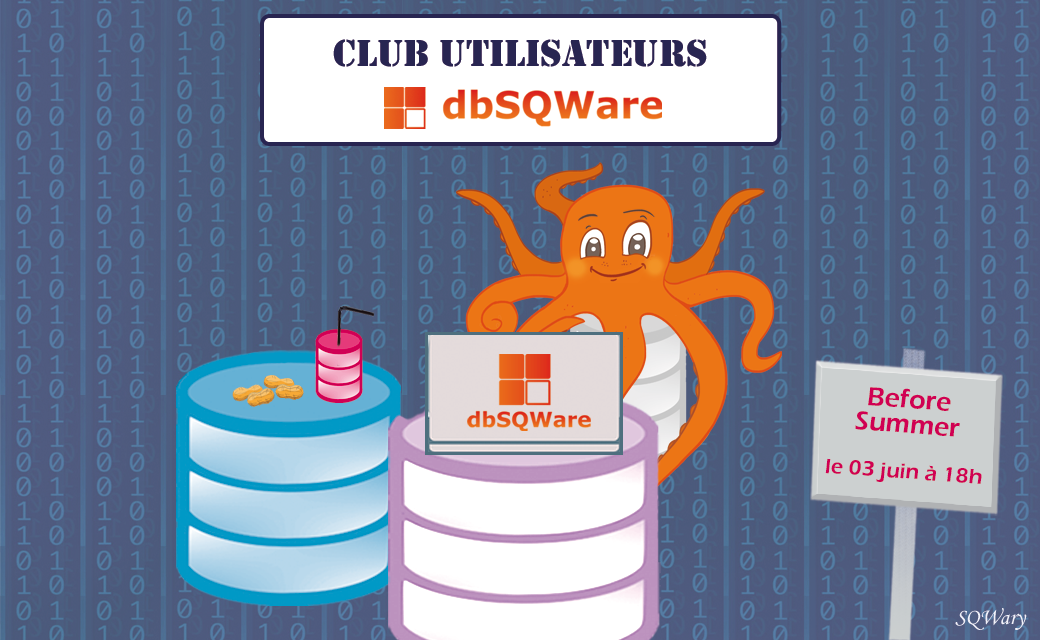
Tonight, starting at 6:00 PM, it’s our USER CLUB’s “Before Summer”! For the occasion, each registrant received a package containing an aperitif box with the ingredients of their choice (drink, spread, and savory crackers).A chance to share a friendly moment before summer and discuss the evening’s theme: “User...
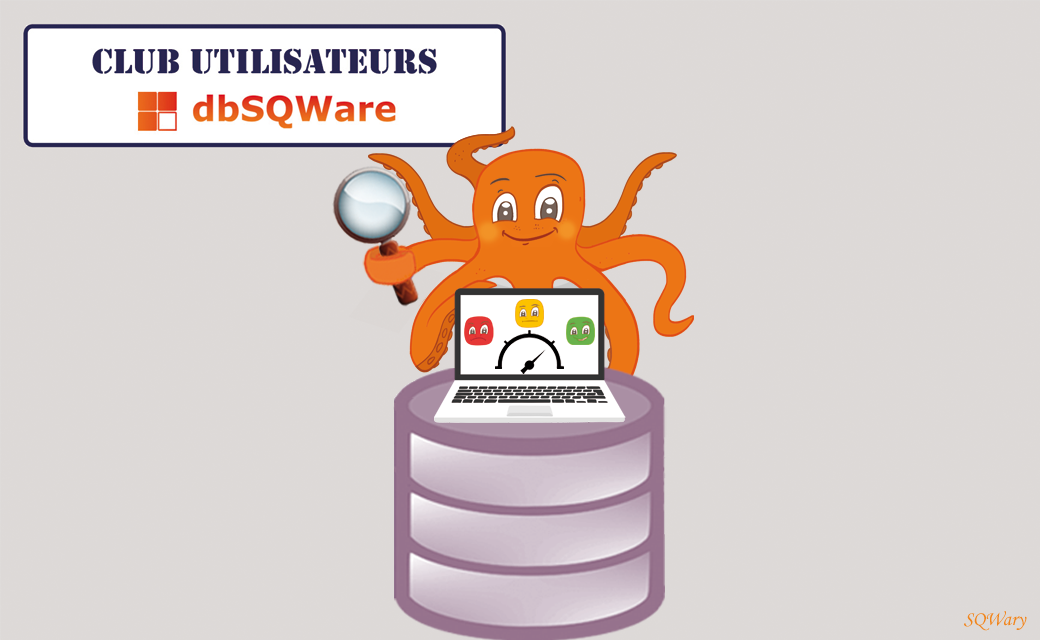
Thursday, March 6, at 5:00 p.m., we launched the first session of our user club.We brought together about forty people during this exchange which lasted 1 hour.The opportunity to present our team, to make a retrospective of the 2024 innovations and to present the new features released in...
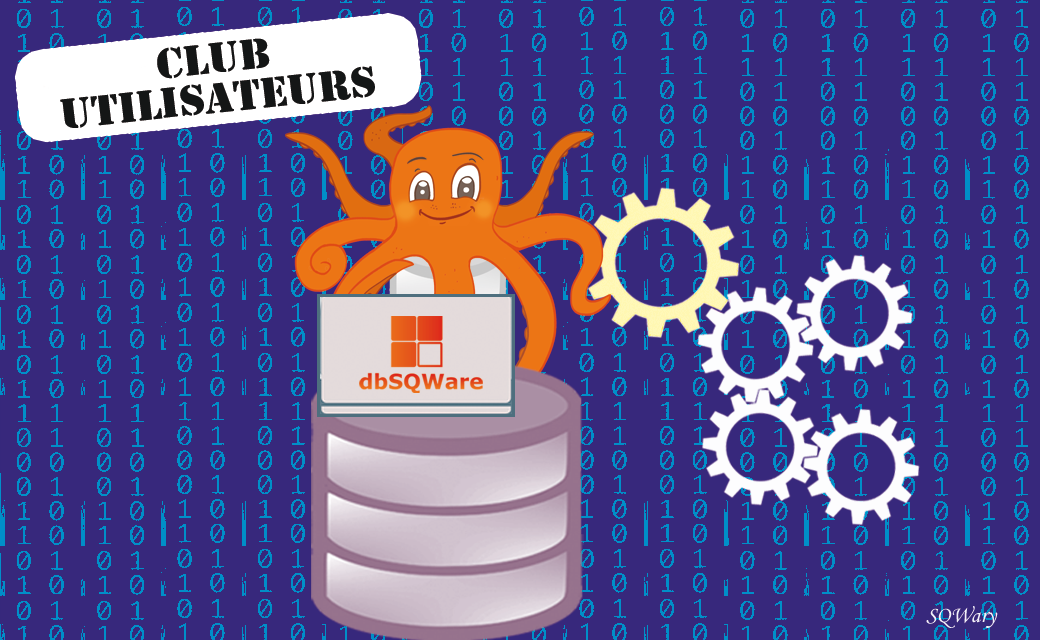
Official start of our USERS CLUB on March 6, 2025! We are happy to announce the creation of a users club around our software, led by Yohann Mauger and Michel Payan.The objective of this club is to inform our users, to strengthen their level of knowledge and to...
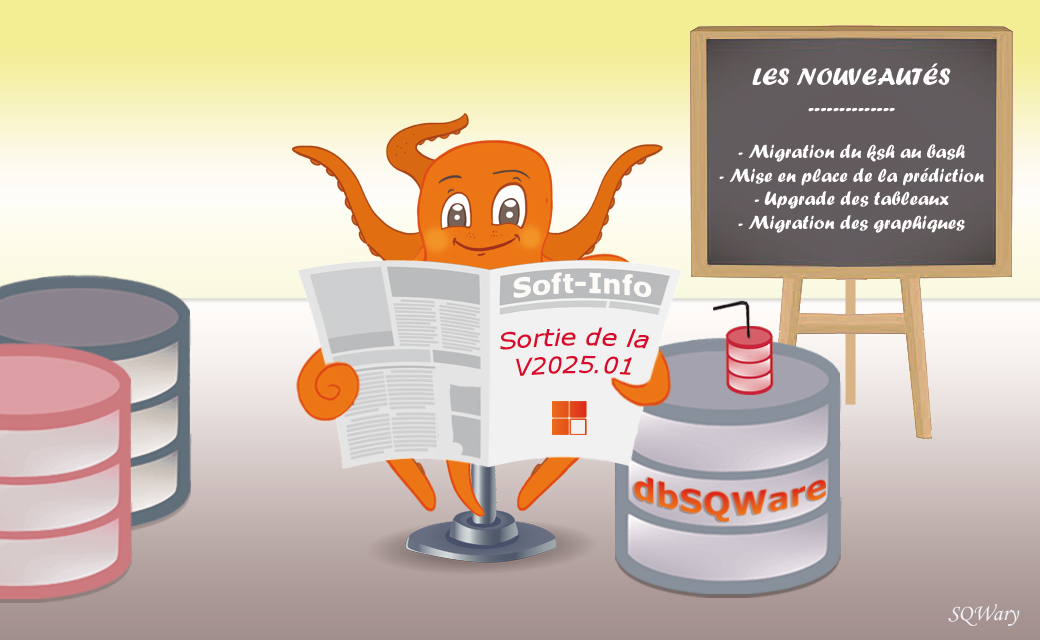
The major version 2025 of dbSQWare has just been released! This V2025.01 includes several major new features, such as: ✔️ migration from ksh to bash✔️ graphic prediction of volumetric evolution✔️ the upgrade of DataTables to V2.2 for tables✔️ Migrating all charts to Billboard 18 years ago, dbSQWare software...



dbSQWare, ce n’est pas seulement un logiciel, c’est aussi la société qui l’édite, fondée par des experts DBA, passionnés par leur métier.